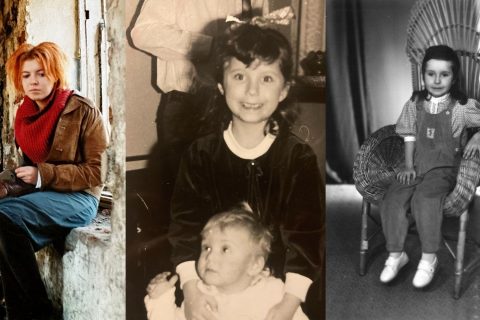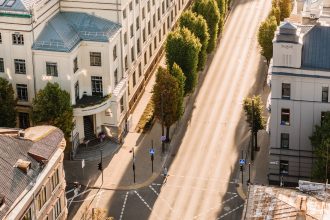The photo featuring you sitting on the back of Vytautas the Great War Museum lions is a mandatory childhood attribute of every Kaunas resident. Frankly, I always associated this place with my childhood, and war at the time seemed like a distant past that would never repeat itself; a relic of the intense experiences of the 20th century, a faint shadow of the past.
Until the 24th of February 2022 when the myth of a peaceful Europe was crushed by an aggressor from the east, well known to Lithuanians. We spoke to the director of Vytautas the Great War Museum Rita Malinauskienė about the changes that are taking place in one of the most famous museums in Kaunas, and asked whether its identity is changing, and what new functions this organization has gained over time.
A meeting at the Prime Minister’s desk
I can’t find a parking spot for my car, so I am worried I might be a few minutes late for my interview. After all, I am going to meet people who are interested in military science, so I think to myself that they probably maintain the order like the one in the military. Finally, I make it on time, and after going down the stairs I meet the director of the museum who looks sharp and introduces herself to me in a deep voice and with a firm handshake.

I immediately mistakenly think that Rita Malinauskienė is an officer because her e-mail ends with KAM (an abbreviation of the Ministry of National Defence of Lithuania). However, the resident of Kaunas, who has been working in this position since 2020, and her career in a museum has lasted for almost 3 decades, is actually a civilian.
“I studied at the Stepas Žukas art school, and after that, I worked as a restorer, while also studying history. The last ten years have been the most active, which brought me to this office. I managed the Museum’s Military Equipment, Restoration, Archive Accounting and Protection departments, and I took care of the 6th Fort project. That’s how I got closer to the army, they helped us transport all the equipment,” the director says.
The military and museums are nothing new
It was news to me that Vytautas Great War Museum belongs to the Ministry of National Defense. Considering the politically sensitive topics it deals with, maybe this is the best solution, leaving no room for alternative interpretations of history or information attacks by forces hostile to us.
One of the oldest museums in Lithuania was founded by officers. “The first director of Vytautas the Great War Museum was Lieutenant General Vladas Nagevičius, thus, when the Ministry of Culture transferred this museum to the Ministry of National Defense, historical justice was restored. If you don’t know what you’re fighting for, how will you fight? Such museums are very necessary for the development of patriotism and public spiritedness in both the soldiers and the civilians,” the interviewee added.
They were among the first to be actively supportive
“Although people were most shocked by the large-scale Russian invasion of Ukraine, let’s not forget that the war started back in 2014, and it’s a fact. Even before the invasion, our museum was supplemented with artifacts from this conflict, for example, the representative of the Lithuanian Riflemen’s Union, Ramūnas Šerpetauskas, brought ammunition remnants from Donbas, which turned into an installation of a cross, which is exhibited in our crypt,” Rita recalls.
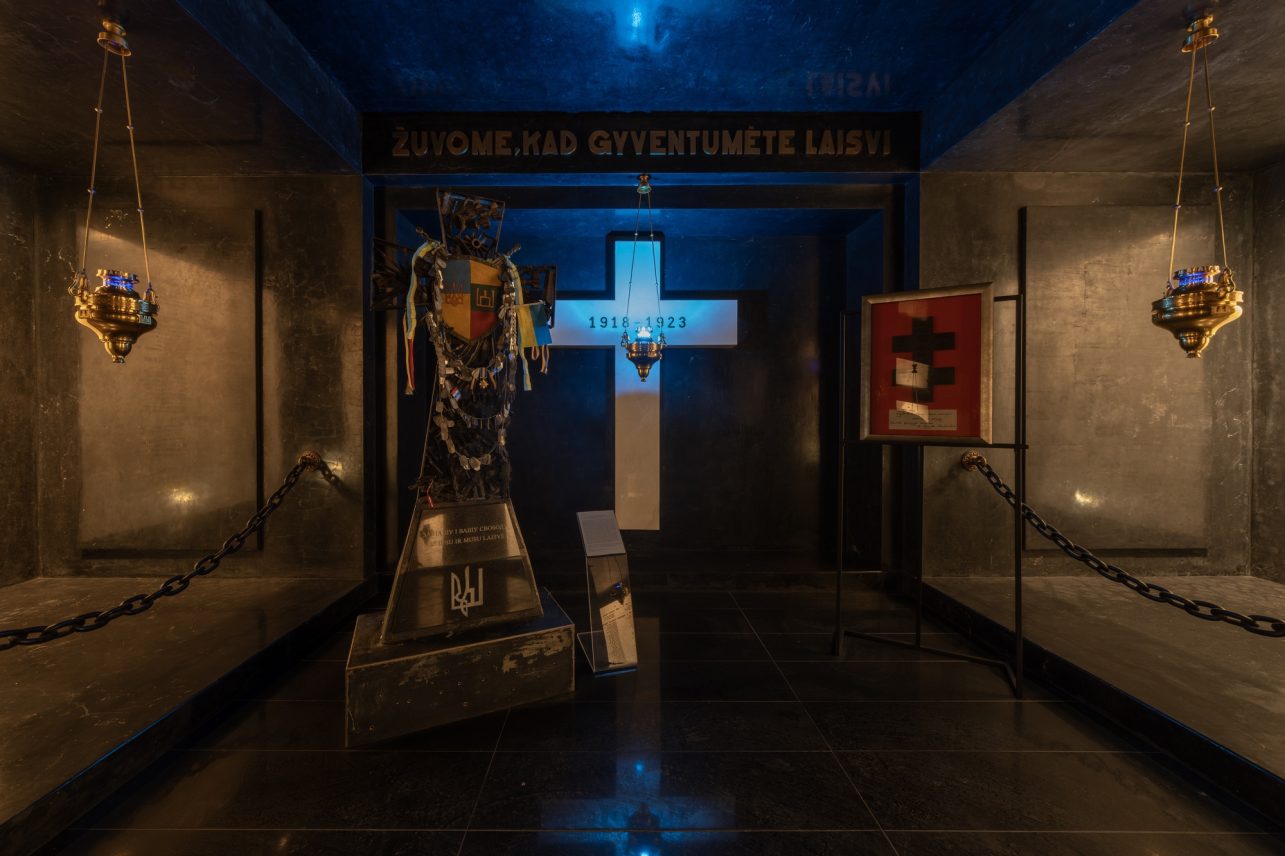
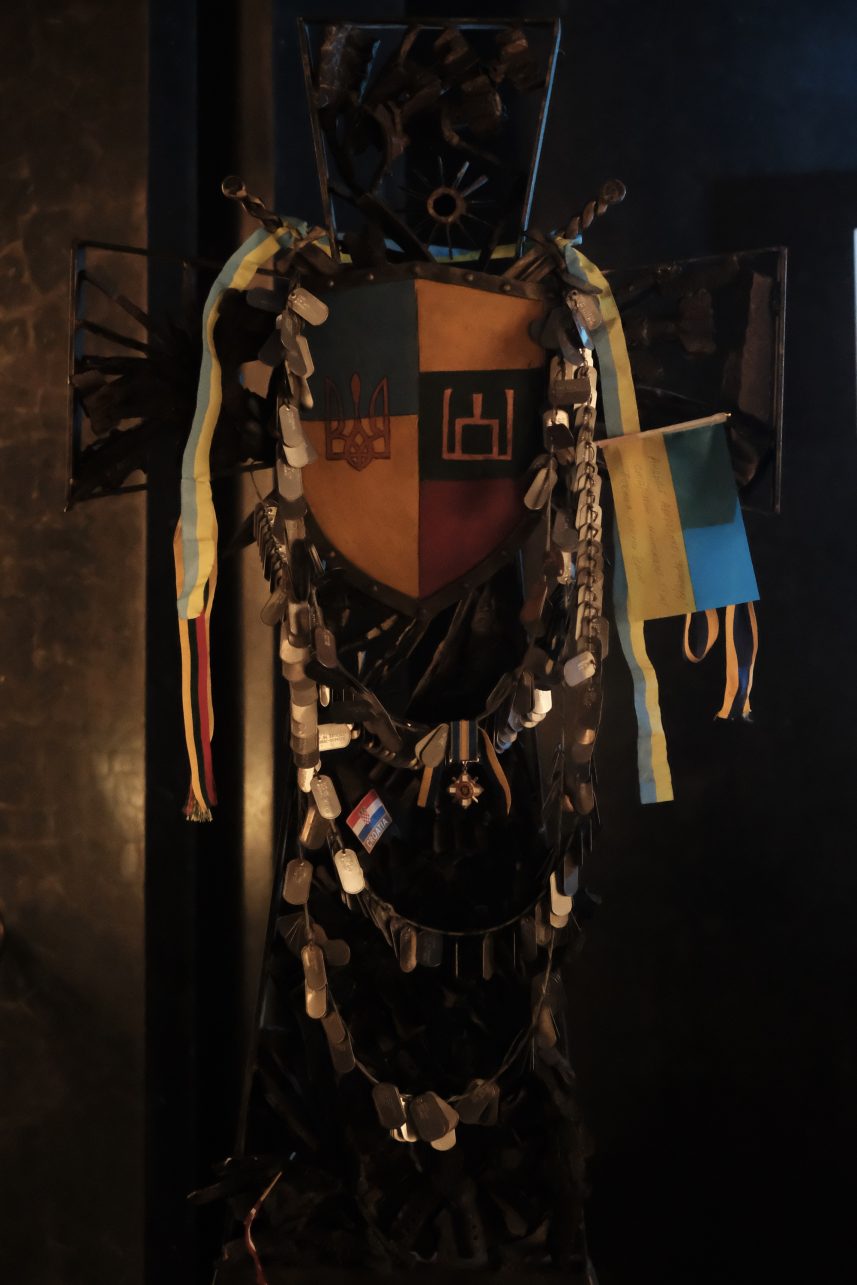
The conversation gets sensitive. Ukrainian war veterans have been visiting the cross for many years, they always cross themselves when they come, and leave their awards and medals next to it. Indeed, the War Museum’s crypt which I have visited more than once is a place of exceptional aura, sacredness, and emotion, and I could not find another place in Kaunas that would be similar to this one.
In addition, Vytautas the Great War Museum was the first to create a museum audio guide in Ukrainian. The Lithuanian ambassador to Ukraine back then was a big fan of this museum and convinced the management that it was smart and necessary. The timely move paid off and one of the oldest museums in Lithuania became a favorite of war refugees who came to Lithuania to seek safety.
“The support action also took place on the eve of the invasion of Ukraine, on February 23. Here, on the square, we displayed the exhibits given to us by Jonas Ohmanas, supplemented them with our own, and organized a hasty exhibition titled Together until Victory. The museum was open late so people could come and warm up. In the morning, we learned that Russia attacked.”
Let the unity blossom
As for the events in the symbolic Vienybės (unity) Square, remembering those first days of the Russo-fascist invasion, I try not to give away that I am on the verge of tears. The situation is made a little easier because the interviewee seems to be feeling the same way.
This word – unity – became the main point of this conversation. It has long been customary for people to gather here – at the tomb of the unknown soldier, near book smugglers, or eternal fire – in difficult times. Nearby, in the carillon bell tower, the tricolor was raised for the first time before the fall of the evil empire. It was here that the first taking down of Lenin’s monument in the context of the USSR took place.
“The function of the museum is not only educational, but now it also unites people, both in Vienybės Square and inside the building. And if earlier we talked about the unity of the nation, now we are talking more about the unity of the nations. In the fight for the ideals that we formulated as a nation 100 years ago when we created both the state and this museum. It is a fight for freedom, a fight for democracy – together against evil,” R. Malinauskienė says.
From sea to sea
Every Lithuanian, young or old, has probably heard this phrase. There is probably no other national paradigm that has been introduced to us more strongly than this one: the great Lithuania, from the Baltic to the Black Sea. And how do the Ukrainians, who are now fighting against the occupier, react to this?
“When you enter the great hall, you are greeted by the Vytautas of the Grand Duchy of Lithuania. In front of him, on the other side, there’s a map of the Grand Duchy of Lithuania. I often joke to Ukrainian groups that this is how our Vytautas examines his lands. Of course, everyone understands that it is a joke, so no negative interpretations have arisen as a result. Ukrainians understand the differences between these historical stages,” Rita continues.
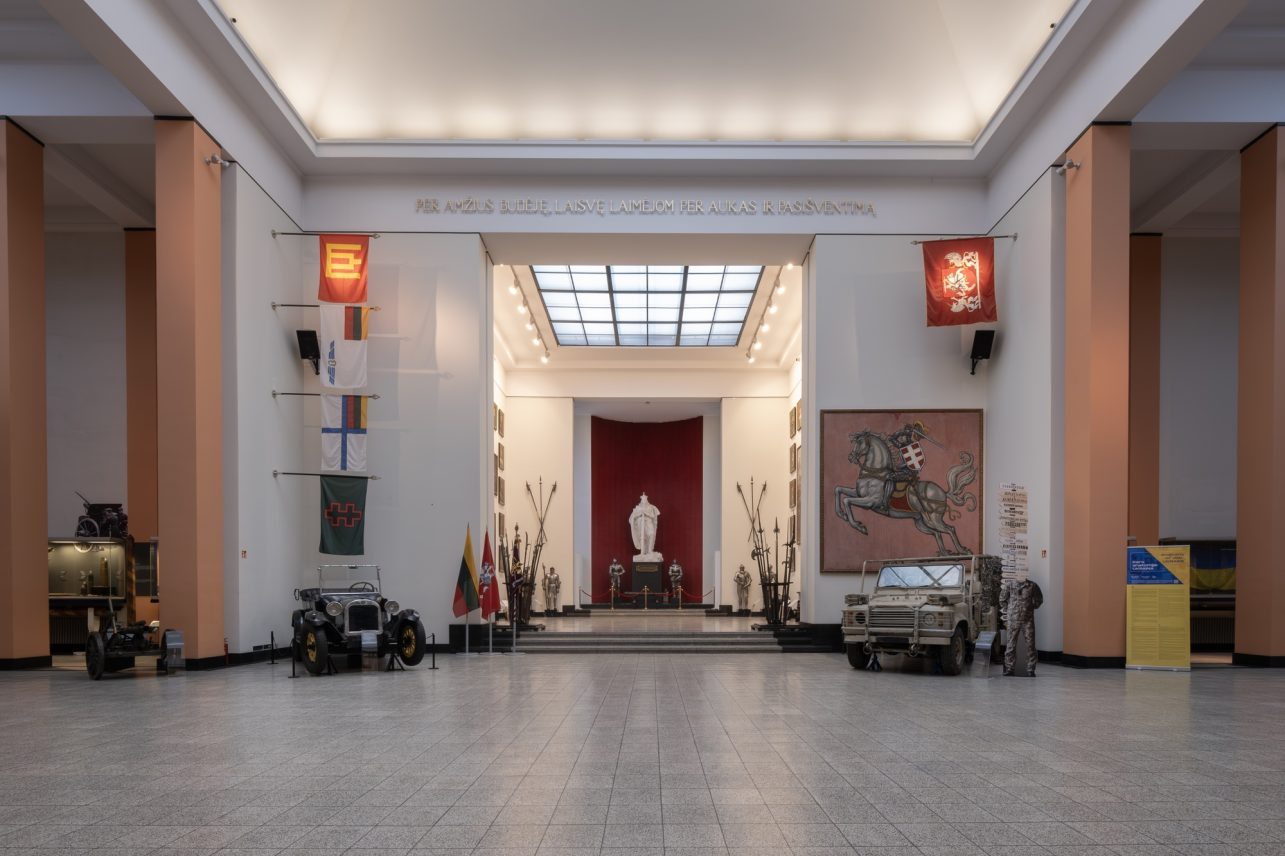
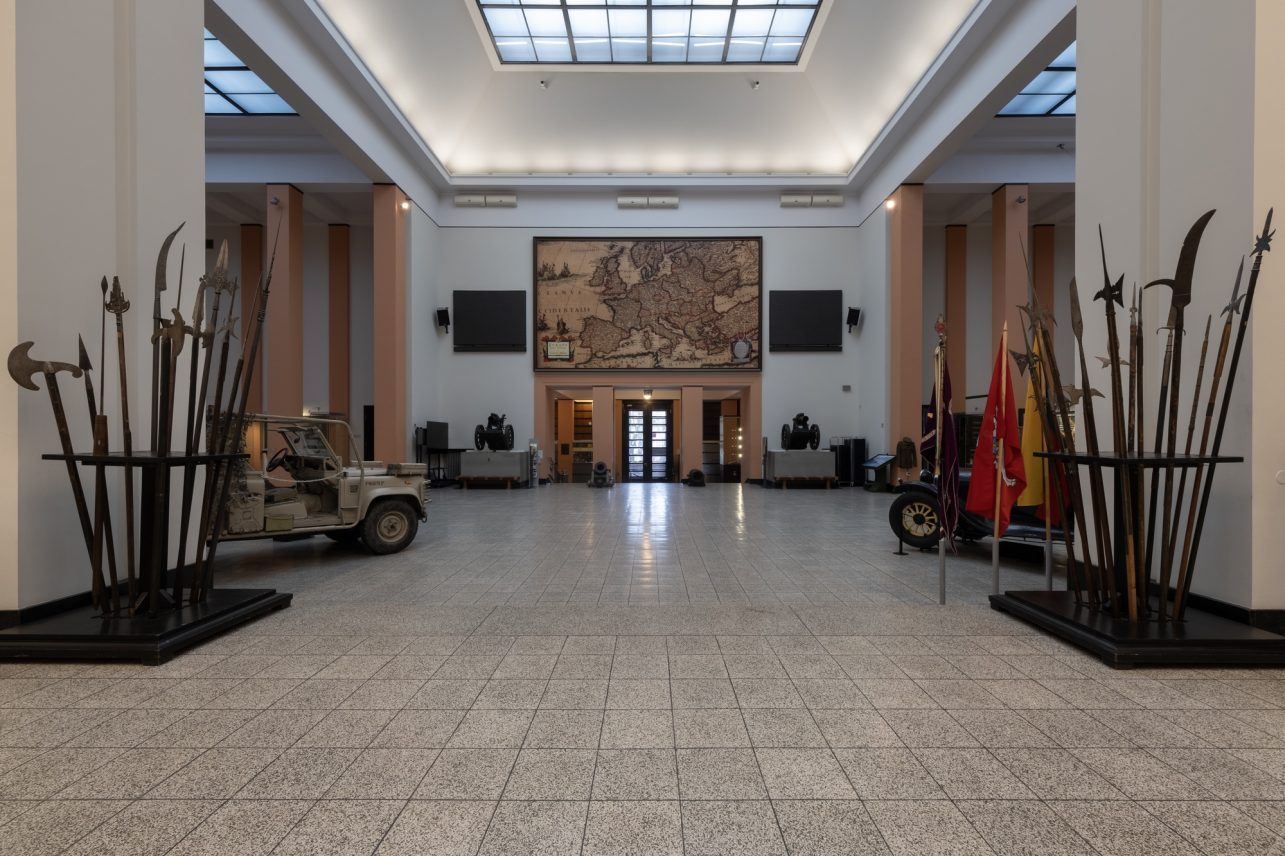
Historians agree that the LDK governance model was unique and not found anywhere else. The success of the expansion of the Grand Duchy of Lithuania was largely determined by the ethnic and religious tolerance of those who were traditionally considered potential enemies.
The offer to cooperate was received quickly
The director of the museum opens up that she received the first offers to work with Ukrainian cultural organizations just a couple of months after the start of the Russian invasion when the attack slowed down and there were opportunities to transport the most valuable exhibits out of the country.
“The tanks entered in February, and we were already organizing an exhibition in April. It had to be transported from Kyiv, where it was hidden and stored. We received a call from the government, Prime Minister’s adviser Gabrielė Židytė. There were many logistical challenges, some exhibits even had to travel to the USA and then come back to us, but on the Midsummer’s Eve we already had our first exhibits,” the head of the museum recalls.
Lithuanian unity did not waver: this exhibition became the first one to be organized outside of Ukraine after the country’s invasion. Later, it traveled to Riga. Now this is being done quite actively: exhibitions are opened in Sweden, Poland, Latvia, and Estonia. Ukrainians realize the importance of their culture during the war: it is necessary to protect it from destruction, and also talk as widely as possible about the country’s identity.
“Although it is certainly not simple and easy for them. We organized the aforementioned exhibition with the World War II Museum, it was not easy to even get permission for the director to leave, because he was conscripted due to his age. Other processes were also being interrupted. It is difficult to match descriptions and catalogs because they often do not have internet.”
Both logistics and insurance pose challenges too. No insurance company in the whole world would agree to insure the transportation of the next Ukrainian exposition to Vytautas the Great War Museum, although this is a necessary condition for almost every exhibition. What should be done then? Here, museums and diplomats work together to find a common interest and a solution.
Is the museum only about war?
War is a terrible thing, which is not easy to talk about. It is difficult to find ways to convey something painful, sensitive, and brutal. However, the interviewee corrects me. “When the museum was created by Vladas Nagevičius after the independence struggles, it was relevant to talk about statehood. It remains relevant in the 21st century, but a museum, like anything else, must adapt to a changing context.”
The threat of war now pulsates very clearly. Anxiety is heightened, and therefore people’s interest can be felt. Only now, in addition to learning how we achieved that freedom or what the history of our warfare is like, people want to know what war is in general. Rita emphasizes that the struggle for freedom never ends, it only changes forms, and therefore the narrative of the museum changes as well.
“The museum now reminds us more clearly than ever: we need to cultivate hope. We are not a defeated nation. If we stumble, we must get up again and move forward. If the armed resistance is over, fine, we go to the kitchens, we go to the basements, we print proclamations, and hold meetings. It is important to remember that you cannot destroy the hope of being free,” Rita Malinauskienė, director of the Vytautas Great War Museum, inspiringly concludes our conversation.

